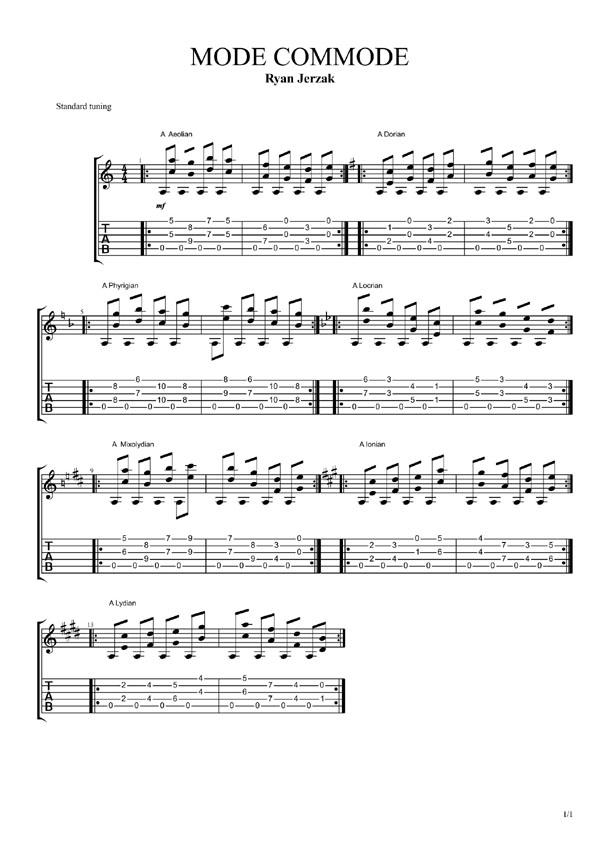I am often asked about what modes are and why they’re useful. I think a lot of confusion arises out of the idea that from your typical major scale, for example C major, which contains the notes C, D, E, F, G, A, B, you actually have 6 other “sub-scales” or “modes” that reside within the scale. Each of these modes have their own unique characteristics.
Here are the 7 modes of the C major scale and a brief description of just some of their uses.
C Ionian—C,D,E,F,G,A,B,C; Major scale. Happy and uplifting sound.
D Dorian—D,E,F,G,A,B,C,D; Minor mode, smooth and soulful. Used a lot by jazzers.
E Phyrigian—E,F,G,A,B,C,D,E; Minor scale with a Spanish quality. Metal heads dig it.
F Lydian—F,G,A,B,C,D,E,F; Major mode similar to Ionian, but not as resolved sounding.
G Mixolydian—G,A,B,C,D,E,F,G; Dominant 7th scale. Funky. Also used heavily in jazz.
A Aeolian—A,B,C,D,E,F,G,A; Natural minor scale. Dark and melancholy.
B Locrian—B,C,D,E,F,G,A,B; Very dark and unstable. Used over diminished chords.
But what’s the point of having all of these other scales that contain the same notes as the parent major scale? The beauty isn’t necessarily the tones by themselves, but in the chords that are generated from them. For example, if you were playing in a melody using B Locrian over a C major chord, it’s going to sound like C Ionian. However, playing in B Locrian over a Bm7♭5 chord is going to sound VERY Locrian. Yes, we’re using the same notes, but it all boils down to what is known as “tonal center of gravity.”
Just as we can create various types of major, minor, dominant and diminished chords from various combinations of only 7 notes in a key, it would make sense that several different types of modes (scales) can be as well.
If we were to measure the distances from one note to the next for each of the modes, we would find that each mode has it’s own unique formula composed of various whole steps and half steps. This is why each mode should be viewed as a separate scale with it’s own identity.
A good way to practice the modes while hearing their individual qualities is to improvise with them up against a drone or pedal point tone. I’ve whipped up a practice routine that uses major and minor 6th chords in each of the seven modes all with a root note of A.
Notice how the key signatures change with each example? This gives you a clue as to the parent keys from which the modes were derived.
For more on improving your guitar skills, call Chambers Guitars for lessons at (615) 898-0055.













